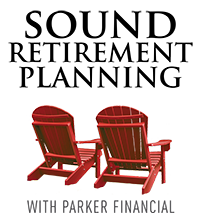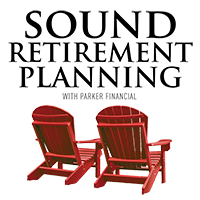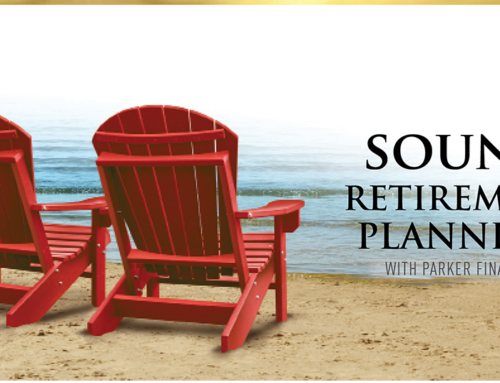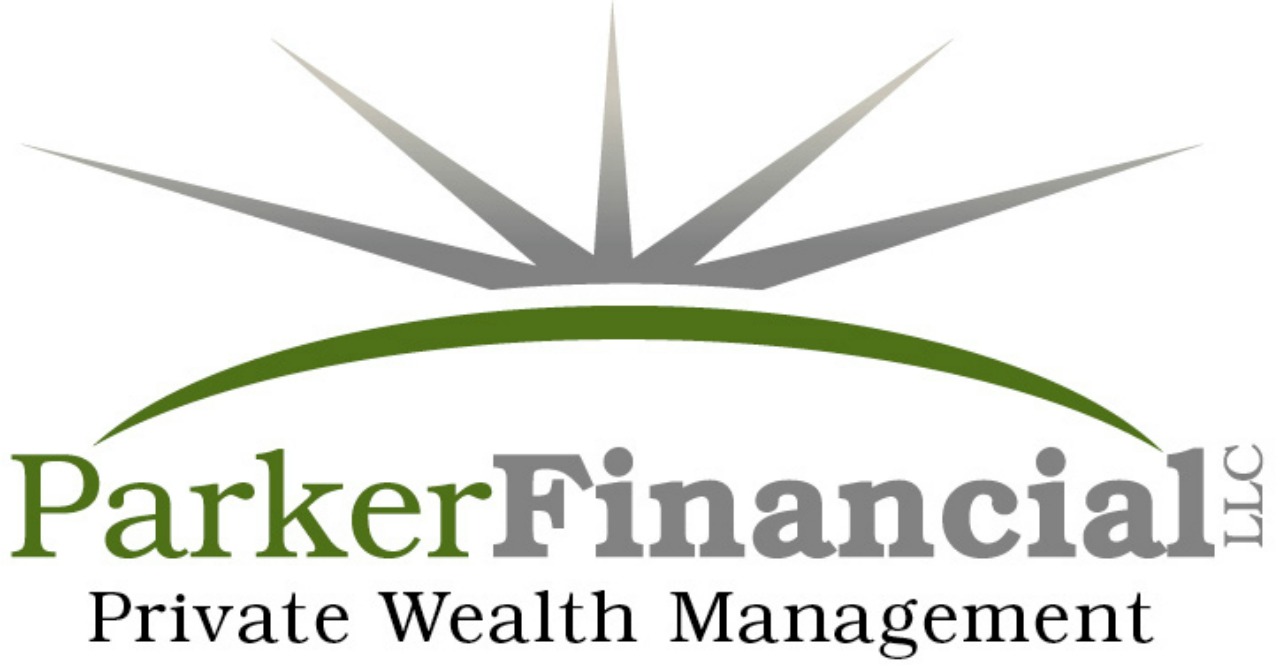Jason discusses the Kitsap Forest and Bay Campaign, specifically the effort to conserve the 3,000 acre Port Gamble Forest with Leonard Forsman, Tribal Chairman of the Suquamish Tribe and Michael Kowalski, avid hiker of the Port Gamble Forest.
Leonard Forsman has served as Tribal Chairman of the Suquamish Tribe since 2005. His interests include tribal education, cultural preservation, gaming policy and habitat protection. He has served on Tribal Council for a total of 25 years, worked as an archaeologist for Larson Anthropological/Archaeological Services and is the former director of the Suquamish Museum. President Barack Obama appointed Chairman Forsman to the Advisory Council on Historic Preservation in 2013.
Michael Kowalski has lived in Kingston since 2006. He and his wife have two daughters, both college age. The Kowalskis use the trails in the Port Gamble Forest almost daily, mostly to take their mini Australian Shepherd on hikes. Michael and his wife have led guided hikes in the Port Gamble Forest as part of the Community Campaign to raise awareness about the efforts to save this treasured land from development. Michael works in technology marketing in the greater Seattle area.
[youtube id=”emS35vU2apE”]
Below is the full transcript:
•••••••••••••••••••••••••••••••••••••••••••••••••••••••••••••••••••••••
Announcer: Welcome back, America, to Sound Retirement Radio where we bring you concepts, ideas, and strategies designed to help you achieve clarity, confidence, and freedom as you prepare for and transition through retirement, and now here is your host, Jason Parker.
Jason: America, welcome back to another round of Sound Retirement Radio. So glad to have you tuning in this morning. You’re listening to episode 129, so if you’re driving down the road this morning in Seattle, you’re not able to catch the whole show, I want to encourage you to go to the website, soundretirementplanning.com. We archive all of these programs for you. This is going to be a good one. This is going to be an opportunity for us to create a legacy, to talk about stewardship, and to do something really amazing in Kitsap County, so if you’re listening from around the country you may not be as passionate about this one, but people here in the northwest are going to love this program, so as you know before we get started I like to start the morning right by renewing our mind, and I have a verse here for us.
This verse comes to us from Genesis 1:1. “In the beginning God created the heavens and the earth.” Then of course I have a joke that I want to share with everybody. Be able to put a smile on the grandkid’s face. What do you call a bear with no teeth? A gummy bear.
All right. With that we’re going to get started on our show. It is my good fortune to actually have two guests with me this morning. First I have Chairman Forsman. Leonard Forsman, chairman of the Suquamish Tribe on the program. I’ll read you a quick bio here. Leonard Forsman has served as tribal chairman of the Suquamish Tribe since 2005. His interests include tribal education, cultural preservation, gaming policy, and habitat protection. He served on tribal counsel for a total of 25 years working as an archeologist, and is the former director of the Suquamish museum. President Barack Obama appointed Chairman Forsman to the advisory council on historic preservation in 2013, and then it’s my good fortune to bring my friend Michael Kowalski onto the program. Michael is a big reason we’re doing this show today. Michael Kowalski, welcome to the show.
Michael: Thank you, Jason.
Jason: Thank you, and Chairman Forsman, welcome to the show.
Leonard: Good to be here. Appreciate it.
Jason: Michael, I thought we could start off with … Actually, Chairman Forsman, let’s start off with you. You’re chairman of the Suquamish Tribe. Share with us why this project’s important to you and the people that you represent.
Leonard: Well, the property we’re talking about today is on the Port Gamble Bay which is an historical cultural territory of our tribe, the Suquamish Tribe. The home of Chief Seattle, and it’s over 3,000 acres of property owned by one company, a mill company, and it’s very important to us to preserve this property for future generations. Not only for ecological purposes, but also for legacy purposes and for recreation, and for passing onto the future generations of our people.
Jason: Yeah. This is a really cool spot. If you haven’t had the opportunity to visit the Port Gamble Forest I want to encourage you to do so. Michael, I want to have you share a quick story, but before I do I looked up the definition of stewardship on dictionary.com, and it says, “As the responsibility overseeing and protection of something considered worth caring for and preserving. The position and duties of a steward. A person who acts as the surrogate of another or others. Especially by managing property, financial affairs, or an estate et cetera.” As we start into this conversation about stewardship and the Port Gamble Forest, just getting our minds right about what it is we’re trying to accomplish, so Michael, one of the reasons we’re doing this program today is you and I were actually out hiking the trail. You and I have been doing this for a long time together, and you shared with me that there’s this campaign to try to save this forest. To actually create a legacy. A protected piece of land that’s going to be around for hopefully generations for people to enjoy like you and I have been for the last 10 plus years. Do you want to share maybe a quick story about some of the experiences you’ve had out there?
Michael: Sure thing, Jason, and I don’t know if you planned to share this or not, but people can learn more at savepg.org, and I’m sure that every one of the more than 20,000 people who visit the Port Gamble Forest could tell you their own amazing story about what the forest means to them. For my family and I, we enjoy the Fort Gamble Forest for exercise. We regularly get out and hike or run with our dog. We also enjoy personal renewal in the forest. Being in nature has a powerful way of slowing down the frenetic pace of life that we’re all living, and it helps us connect to the family, and remind us of what really matters, and then finally you alluded to this friendship building. We’ve developed many deep friendships as we’ve spent time with people out on the trails in the Port Gamble Forest, and we look forward to continuing that, and I do look forward to leaving this land as a legacy to my own children and their children.
Jason: Yeah. It’s really an amazing space, and so I want to transition back over to Chairman Forsman. As it relates to the Suquamish Tribe, how will the preservations of these lands impact future generations?
Leonard: Well, the tribe’s really looking to preserve as much open space as we can in our traditional territory, and this area’s interesting, the Port Gamble Bay because the Port Gamble S’klallam Tribe’s reservation is there, and there’s other tribes on Hood Canal that use this area for fishing and gathering, and the Suquamish of course, we’re very local, and we’ve been using that area for generations, and we want to have opportunities for the future generations to gather plants, to harvest marine life, and also to have that opportunity to convene in the forest, and do those activities that are getting harder and harder to find in Kitsap County as this area grows, so we really are hopeful that we can get this campaign complete and get this property put away and safe from development and there for our future generations to enjoy.
Jason: I want to make sure our listeners understand the kind of space we’re talking about here, too, and on that website savepg.org you guys give some examples of some of the other parks that people are familiar with, and so you say Washington Park in Portland, organ is 410 acres. Central Park in New York City is 843 acres. What kind of size are we talking about? What’s the size of this space that we’re trying to preserve, Chairman Forsman?
Leonard: Well, it’s well over 3,000 acres, and there’s a shoreline piece that’s been acquired, and we’re trying to choir more of the upland piece, so it’s a unique environment in that you not only have Port Gamble Bay and Hood Canal, but you also have the historic mill town which is a national historic landmark, and something I helped manage as my job as an appointee of the president of the advisory council and historic preservation, so these opportunities for people not only to have a tourist historic experience, but they can combine that with a wilderness experience, or it can be a walk, it can be a run, it can be a bike ride, it can be a horse ride. There’s all these things it can be. Going out and collecting the traditional plants from a tribal perspective for medicines or for food. There’s a variety of things that can happen. Heck, you could even just kind of drive through slowly, and it’s a real opportunity for visitors and also the local population who’s really, really supported this project greatly.
Jason: It’s an amazing space. I want to share a quick quote that I found from Henry David Thoreau when he wrote Walden. He says, “I went to the woods because I wished to live deliberately. To front only the essential facts of life, and see if I could not learn what I had to teach and not. When I came to die, discover that I had not lived.” There really is something amazing about getting out in the woods, and I wanted to share a quick story because I’ve been using this space for 10 plus years. In large part thanks to my friend Kowalski who I refer to as K-Dog, so if any of you are going to come to the area maybe Mr. Kowalski can take you on a hike, and kind of show you what we’re trying to preserve and why, but if you do see him out there make sure you say, “Hey, K-Dog, thanks for the work that you’re doing.”
Years ago some friends of mine said, “Jason, we’re going to go mountain biking up there in the Port Gamble Forest. Will you join us?” I had this mountain bike that we had bought when I was living up in Alaska, and I show up at the trail head, and these guys they pick up their bikes off the back of their car, and as they set them down they’re so light that they literally float to the ground, right? I’m looking around. Most of these guys spend more on their bicycles than most people spend on their cars, so we start riding the trail. There’s about 20 people out there, and these guys are so fast that I’m always the last guy to show up to the group, so they’re well rested by the time I get to them, and after about a half an hour and having not ridden my bike for probably two years or so I realized that I was just in way over my head. I mean, these guys. There’s no way I was going to be able to keep up, and so I said, “You know, I think I’m going to head back to the car.”
On 3,000 acres after 30 minutes of riding in the woods, guess what? I wouldn’t say I was lost, but I would definitely say I was temporarily disoriented, and I was by myself trying to find my way back out of the woods. Kind of laughing to myself that I was as lost as I was, and to think that there’s a place so close to home that we can get temporarily disoriented is really a treasure because in the world we live in today there’s signs everywhere. You never feel lost. You’ve got a GPS always telling you exactly where you’re at, and so I just love the fact that you can go out into the woods and get lost.
Leonard: There’s adventure to be had there.
Jason: It is adventurous. Yes, indeed. Hey, Michael, I wanted to ask-
Michael: If I could add real quick, Jason, it’s a treasure for the entire Puget Sound because it’s just a ferry ride and a bicycle ride away from a highly populated area.
Jason: Well, that’s a great point, and Chairman Forsman, you talked about Seattle’s growing 1,000 residents per month, and our region’s growing … They’re saying by 2024 it’s estimated our region’s population will grow by 24%, so there’s an opportunity to protect some space now that if we don’t act … There’s a deadline on this. Do you know the deadline that we have to have the money raised in order to protect the forest?
Leonard: I’m not sure of the date, but it’s this year, so we do have a real hard deadline, and we need to meet that.
Jason: Michael, to your point, this space if people are into mountain biking or horseback riding or just hiking or getting lost in the woods, it’s 28 miles from Seattle, 37 miles from Bellevue, 55 miles from Tacoma, and it is an amazing place. For our listeners that are tuning in today from around the country, if you have an opportunity, if one of the things on your bucket list is to come visit the beautiful pacific northwest, imagine coming to a place that you could say you helped preserve for future generations. Go on a hike. Get lost. Have a great time, and help make this a reality for not just the focus here in Kitsap, but people all around the country, potentially all around the world, that will come to our community to visit this 3,000 acre piece of land.
Michael, what kind of wildlife have you encountered out there?
Michael: Jason, I was out on a mountain bike ride one time early in the morning during salmonberry season, and encountered a black bear. The same black bear twice on the same road, and this black bear sort of lumbered across the access road in front of me two times, and that was an awesome experience, and then we have seen a coyote. We’ve also seen on several occasions we have seen owls.
Jason: No kidding, so owls, coyote, and even a bear. How did that make you feel?
Michael: You know, I do a lot of hiking in the Olympics, Jason, and so I know that they don’t like me, so I wasn’t fearful, but it was really, really an awesome experience to have a black bear cross the road in front of me.
Jason: Awesome. There’s a habitat there, folks. This is not just forest land for humans to enjoy, but there’s a lot of other animals that we’re sharing this beautiful place with. Chairman Forsman, what does the future of the forest look like if we don’t hit our goal by July? What’s going to happen to this property? I know you’ve been working on this for 20 plus years.
Leonard: Yeah. My primary concern here is it’s privately owned, and the company that owns the Olympic Property Group, Pope and Talbot, they do have to get a return on their investment, sore we’re concerned that they would potentially develop this, and we could lose this one opportunity to preserve a huge open space that’s owned by a single owner which makes things a lot more less complicated when you’re dealing with one owner, and so we really want to seize that opportunity, and they’ve been patient with us, and I think they want to see it happen as well, so for us to get in there and get this done now, especially as real estate continues to sky rocket, and we’re getting a new ferry system in. We’re going to have passenger only ferries coming to Kitsap. We can only see more growth coming, so the pressure will be even greater as each day goes by, so we really want to see that happen.
Jason: You guys created this really great video that people can watch at savepg.org. Savepg.org, that talks about the forest. It shows examples of the forest, but one of the things I loved there was they talked about how this has really been the tribe coming together with the government and with the people and with the business owners, and everybody wants to make this happen, and that is really unique in our world today is that you’ve got all these different interests coming together saying, “Hey, this is a really neat place that we can preserve.” The fact that Pope Talbot is helping to make that happen, like you said they’ve been patient through this process, and patient with the people as they’ve been trying to raise the resources to purchase the land to protect it. That’s pretty neat. That’s unusual today, wouldn’t you say?
Leonard: It is. You got two tribes, the Suquamish and the Port Gamble S’klallam Tribe and the Kitsap County, and we don’t always see eye to eye, but on this one we are really working together, and we have a common goal, and the community’s been great. The users and the surrounding community have been very eager to get going and get this project done, and some previous elected officials as well, so we’re really happy with all that, and we’re just getting towards the finish line. We really could use some help.
There’s a program out there. I can’t give you the number, but you can buy an acre, and it’s pretty inexpensive, and you can buy it for a grandkid, or you can buy it for somebody in your family that maybe preceded you. An ancestor, as we call them in Suquamish, in their name, so go to the website, and you get an opportunity to … There was one individual who bought an acre for every one of his grandkids.
Jason: Is that right?
Leonard: Yeah, so it’s a pretty good way of leaving a legacy of your own.
Jason: Folks, I’m going to, on Sound Retirement Planning, we’re going to put a link to savepg.org, but if you have the opportunity to donate to help protect this area I want you to make a comment under this particular post. Just let us know, and I’ll tell you sometimes people are intimidated. To save an acre of the land, I was reading, is $2,500, and sometimes people hear that big of a number, and for some people that’s very intimidating. There’s no way they can contribute that much to save an entire acre, but many hands make light the work, and I know that if you can only contribute $5 to the thing to save this piece of land for generations and generations that would be awesome.
I have a quote here actually. This comes from Chief Seattle. How was his name properly pronounced? The proper …
Leonard: Well, it says Seattle on the treaty. A lot of the other later pronunciations [inaudible 00:16:15] I think it was more like [inaudible 00:16:17], so that attle was probably swallowed a little bit in our traditional language, so I usually go with Seattle because that’s what’s written on the treaty in 1855.
Jason: That’s what most people know.
Leonard: Yeah.
Jason: This is a quote from Chief Seattle. It says, “Humankind has not woven the web of life. We are but one thread within it. Whatever we do to the west, we do to ourselves. All things are bound together. All things connect.” Chief Seattle.
That’s pretty awesome.
Leonard: Sustainability, folks.
Jason: That brings us to my next question for you, chairman Forsman. Why is the health and wellness of the Port Gamble Forest and Bay a priority for Suquamish?
Leonard: Well, we’ve got a commitment to and preserve Puget Sound, and we’ve had some real challenges with that, and we’re trying to make improvements of water quality. We’re trying to improve salmon habitat. We’re trying to improve shellfish habitat. We’re trying to manage storm water, and one way to do that is preserve open space, provide ecological balance that we need in the sound, and that includes having strong forests and healthy forests and clean streams and all those things, because the less impervious surface, you know, sidewalks and roads and things we have, the better Puget Sound will be.
Jason: Absolutely. Michael, I want to come back to you. You and I have had an opportunity over the 10 plus years to spend a lot of time on those trails, and it wasn’t very many months ago in the middle of winter you and I met out there. It was still 0 dark 30. We hit the trails, and I remember getting to the very top of this … There was a clearing. You could see the moon just hanging there in the sky. It was so cold out of course you could see your breath kind of fogging the moon if you will, but what are some other times in your life that you’ve really been impacted just by being able to be out on that trail?
Michael: Boy, thank you for helping recall that memory, Jason, because the views of the Olympic Mountains, those jagged, jagged peaks, and then back over the other direction toward the north cascades and Mount Rainier are just awesome from up there, and, boy, I think just the times I’ve been out there with family and friends you have an opportunity to connect and reconnect with them. It gives you a place away. A place to go get lost. Whether you’re getting lost in your own thoughts, or getting lost with a friend and having some social time. It’s just an awesome experience, and so it’s a great place to be. I hope that we are able to preserve the entire property.
Jason: There’s another quote that I have here. Theodore Roosevelt, our 26th president who helped establish the national parks system. He said, “We have fallen heirs to the most glorious heritage a people ever received, and each one must do his part if we wish to show that the nation is worthy of it’s good fortune.”
Chairman Forsman, I want to come back to you. Have you had any experiences out there in the Port Gamble Forest?
Leonard: Yeah. I actually was introduced to it in a couple of 5K runs. I’m a runner when I can, and try to stay active, and the first one I went to is primarily on logging roads, and you get a little disoriented out there as you mentioned earlier, and then the second one was up by this field where they fly model airplanes, and we took off, and next thing you know I was in a single path, so called trail, through the woods. Ducking under branches and around logs, and just trying to figure out when was I going to come out of these woods. It was dark in there even though it was daylight. It was beautiful. I wish I’d had been less competitive and just started walking to enjoy it. Made it out of there okay, but I was very tired because there’s lot of up and down, and Michael might be familiar with the trail I’m talking about, and it was an adventure.
Jason: One of the things that’s cool, there’s a lot of people out there that don’t … I mean, this is really a hidden treasure, and one of the reasons I wanted to do this program, Michael, you were doing a college course on marketing, and you said that this was a project that you picked up, and so when we were on that hike that morning you said, “Jason, you know, for this college course I’m trying to raise awareness. A lot of people don’t even know that this 3,000 acres exists.” For the mountain bikers out there it says there’s a 200 acre mountain bike park with riding loops and skill obstacles, and I remember a friend of ours, Wade, he got a little technical out there. Do you remember when Wade was riding his mountain bike, and kind of took a good head over the handlebars?
Michael: Oh, yes. Definitely, and you know that skills park hasn’t been developed yet, but there’s a vision for that, but I do know that there are plenty of opportunities out there. All types of trails for all types of users. Some difficult, some easier, some for beginners, some for experts, and yes Wade, yeah, he’s Mr. Goat Legs. He’s good on that bike.
Jason: He’s pretty amazing, and you know what? Taking a spill over the top of the handle bars, if you haven’t done it you haven’t really lived.
Michael: That’s right.
Jason: Yeah, I mean that’s part of … For you, Kowalski, learning that once you use those shoes that clamp into your foot hold … I remember being out there with you, and we were barely moving along, and all of a sudden you just kind of fell over into the bushes.
Michael: Yeah. I’ve landed in a few bushes. Yes.
Jason: Couldn’t get your foot out of the foothold. Chairman Forsman, we’re almost out of time. What’s the most important thing you want our listeners to take away from our time together today?
Leonard: I think that we have an opportunity here. It’s an opportunity for a legacy, and as we get older you think about what you can leave behind, and this is something that we don’t want to take for granted. I’ve been going out there just driving through Port Gamble a lot on my way out to Hood Canal just being able to see that unspoiled wilderness, and the history of that area is so important that I think it’s something we want to have that experience. Especially as we grow to have for our children in the future, and you know also honor our ancestors as well that we can hold onto something, pass it on. It’s a great tradition in our tribe that we carry on that we carry these things on together.
Jason: Folks, you’ve been listening to episode 129. You can find this show online at soundretirementplanning.com where we archive it for you. On my way into this show this morning I was talking to my son, and this song came on the radio by Phil Wickham, and it’s called You’re Beautiful, and so I just wanted to play a snippet of it because it reminded me of this area. I want to remind you to go to savepg.org, or visit Sound Retirement Planning. Even if all you can give is $5, every dollar makes a difference. We have a July deadline. We have to do this. I hope if you’re listening from around the country you’ll come and visit. Help us save this place, and check it out. Until next week, this is Jason signing out.
Announcer: Information and opinions expressed here are believed to be accurate and complete, for general information only, and should not be construed as specific tax, legal, or financial advice for any individual, and does not constitute a solicitation for any securities or insurance products. Please consult with your financial professional before taking action on anything discussed in this program. Parker Financial, it’s representatives, or its affiliates have no liability for investment decisions or other actions taken or made by you based on the information provided in this program. All insurance related discussions are subject to the claims paying ability of the company.
Investing involves risk. Jason Parker is the president of Parker Financial, an independent fee based wealth management firm located at 9057 Washington Avenue Northwest, Silverdale, Washington. For additional information call 1-800-514-5046, or visit us online at soundretirementplanning.com.






